|
|
GeoAstro Applets |
Astronomy |
Chaos Game |
Java |
Miscel- laneous |
| Key |
Function |
| d |
1
day forth |
| shift
+ d |
1
day back |
| m |
1 month forth |
| shift
+ m |
1
month back |
| space |
current
date |
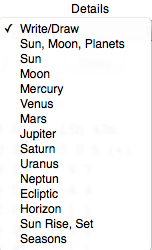
|
Daylight
Select "Sun, Rise, Set" from the "Details" menu  Duration of civil twilight (rise/set to -6° altitude): 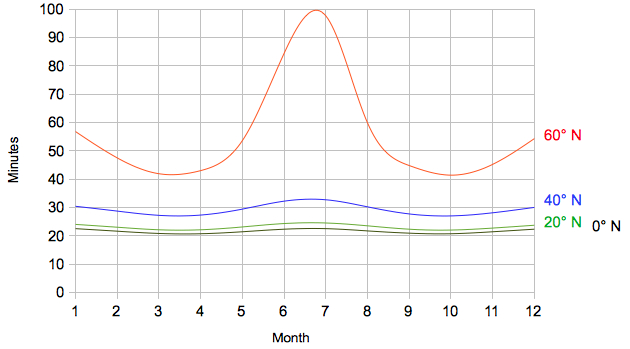 Rise and Set The visibility of a celestial body depends on the latitude of the observer and on the declination of the body:
The last column of the
applet is showing:
The Moon
The Moon rises about 51 minutes later each day.
Therefore there are days without rise, transit, or set,
which occur about every 29 days (12 or 13 times per
year): To print the table
copy and paste it into any text editor.
The times referr to
the same
calendar day, for example:
on Mar 02, the Moon rising at 11:08, transit at 19:30, will set at 03:46 next day. At 03:03 the moon is setting, which rised at 10:16 the previous day.
Extreme magnitude of the planets:
 |
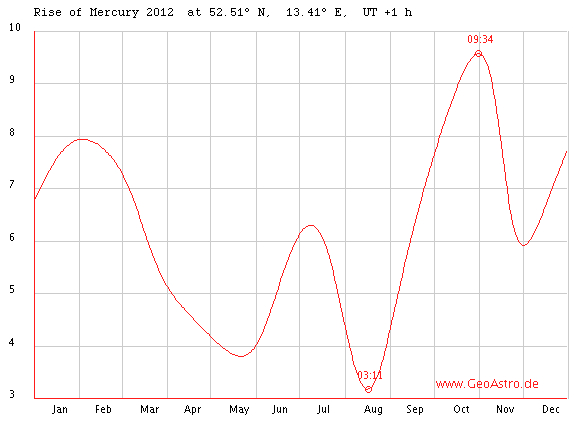
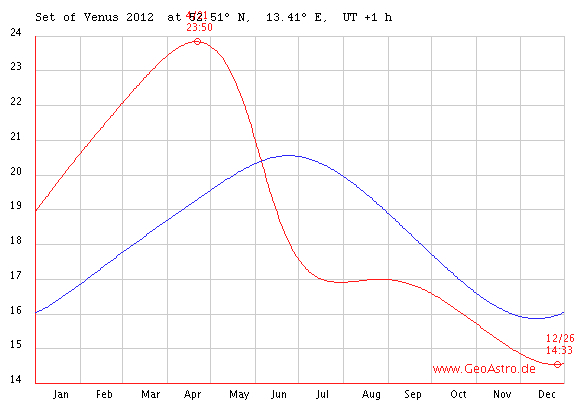
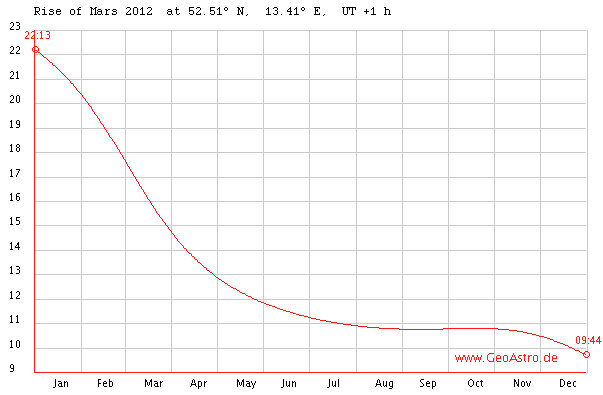


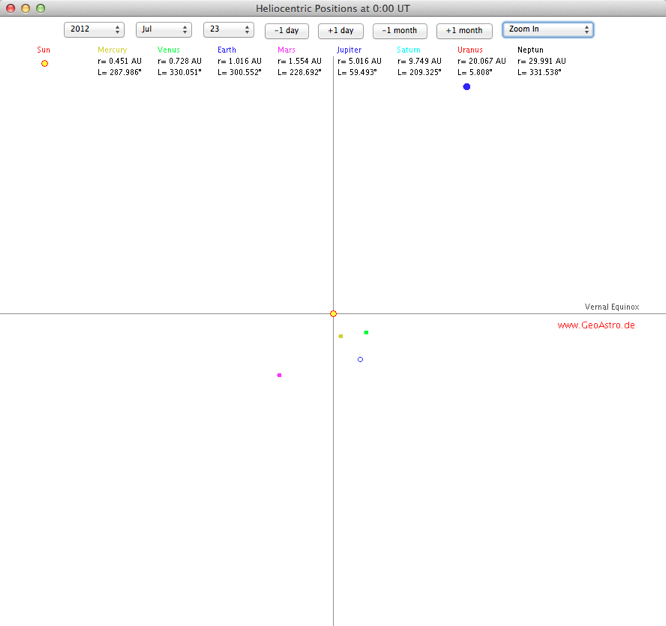
|
|
|
Why does the moon rise 50
minutes later each day? |
jgiesen(at)t-online.de